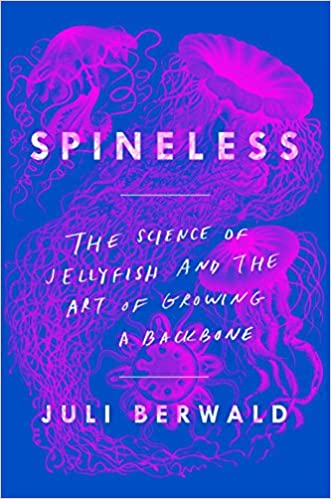Hiroshima’s downtown is a garden of modern architecture interspersed with swaths of lovely green parks. In the center, there is a single structure, in ruins, capped by a skeleton of curved iron. This is the Atomic Bomb Dome, located at the destruction’s epicenter, the sole building that managed to remain standing amid the massive force that flattened everything else for miles in all directions. It is an astonishing memorial to both our capacity for horrifying devastation and our awesome resilience. The dome sits along the side of one of six tidal streams that flow through Hiroshima. In the murky, green water, I watched thousands—maybe hundreds of thousands—of pale pink disks parade by, a flood of jellyfish. Juxtaposed with the dome, the endless stream of jellyfish seemed to square off nature’s power against our own, a battle as old as civilization that continues to play out in the decisions we make today. They were the first wild jellyfish I saw in years of chasing jellyfish. The milky creatures pulsed slowly, slower than my heartbeat, which dropped as I watched. The movements of their bells trailing gossamer tentacles were like millions of eyelashes blinking open and closed and open again, giving me a feeling that these alien animals could peer deep into the soul of the sea. I found it impossible to fathom the source of this endless river of life. The jellies continued to flow by for as long as I stood and watched.
Maybe you remember the first time you saw a jellyfish. Maybe you were lucky enough to stick your head under the ocean’s surface, wearing a mask, and watch the primal undulations of a jellyfish dancing to some internal rhythm. Maybe you felt a biting sting in the water and turned to see a gelatinous blob disappear like sinking mucus. Maybe you stood against the glass and watched the elegant clover on the back of a moon jellyfish or the graceful train of a sea nettle in an aquarium. Or maybe it was footage of jellyfish hawking a cure for memory loss.
I don’t remember the very first jellyfish I saw. I grew up in a time before aquaria were full of jellyfish tanks, in a very landlocked in St. Louis. I never spent an extended period near the ocean until I was in college. In my junior year, 1987, I attended an English-speaking study abroad program in Tel Aviv. From a New England school where getting ready to go to a party meant putting on tattered jeans, a flannel shirt, and duck boots, I was a misfit among the other American students, who were a lot less style-challenged. I found the Israelis my age no easier to get along with. At nineteen, they were required to serve in the army, while I had the freedom to jaunt off to college unencumbered.
